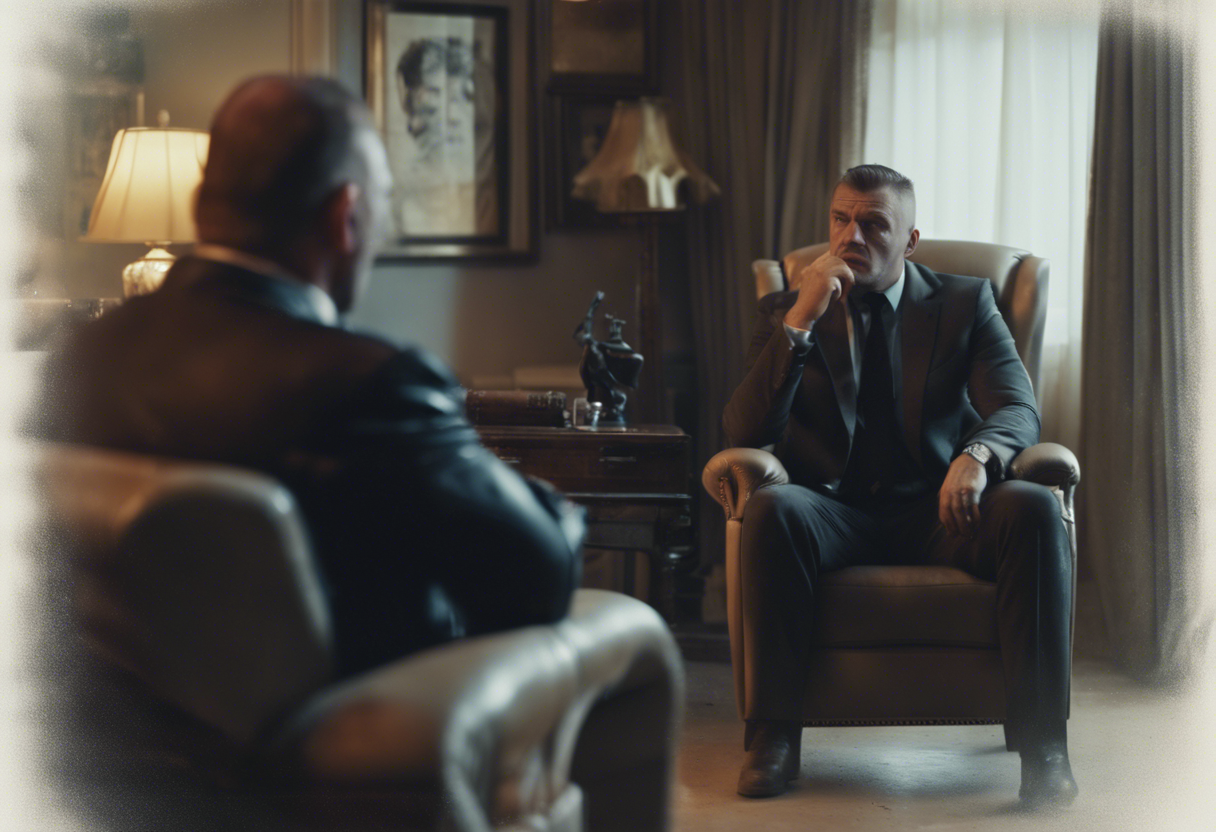This week’s top three summaries: R v PM, 2020 ONSC 5439: #credibility; unresponsive #witness, R v Abreha, 2020 ONCJ 401: #possession and the found-in, and R v TL, 2020 NUCA 10: insufficient #reasons
R v PM, 2020 ONSC 5439
[September 8, 2020] Credibility - The Unresponsive Witness [D.E. Harris J.]
AUTHOR’S NOTE: While inconsistencies in evidence are the bread and butter of a good cross-examination, they are not always necessary. This case supports the proposition that deliberately unresponsive answers in a witness and combativeness towards defence counsel can be sufficient to secure an acquittal. Where the witness behaves in this fashion, the judge can make negative findings of credibility that affect their overall evidence, not just on the topics they are unresponsive about.
Overview
[1] The defendant P.M. is charged with several sexual offences allegedly committed against A.B. A.B. was the young daughter of his new wife; she was P.M.’s stepdaughter. The offences are historic; they were allegedly committed 38 years ago....
[2 - 3] [The complainant testified to an uncharged sexual assault that occurred in Edmonton when she was 14] [4] The complainant testified that the next incident occurred in the Glen Erin Drive apartment in Mississauga into which she moved into in grade 6 or 7. P.M. found her in the complex’s recreation room after her curfew. She had been attending a Halloween party with friends. P.M. beat her as a means of discipline. A few days later, P.M. and A.B. were alone in P.M.’s bedroom. He forcibly kissed her, sticking his tongue into her mouth. She cried uncontrollably. Ms. A.B. agreed that when she eventually went to the authorities with the allegations against P.M., she did not inform them of this incident.
[5] The main incident around which this trial revolved occurred on a day in the fall of 1983. A.B., about 15 years old at the time, was pregnant and had just returned from a doctor’s visit. 1 She did not go to school that day. She was in her bedroom. P.M. came in and asked her to come out into the hall. She was told to lie down. P.M. then raped her. He had a washcloth in his hand and put it over her mouth. Ultimately, he ejaculated into the washcloth. She recalled looking back at the light coming from under the front door of the apartment. It was about 3:30-4:00 p.m. and she was expecting and hoping that her brother would come home from school and interrupt the sexual assault. While the complainant described in general the clothes P.M. was wearing and a scar on his upper chest, she did not remember what she was wearing.
[7] The accused did not testify.
Analysis
[8] I will begin with several general observations before moving on to the more specific. In cross-examination, A.B. was a combative witness. With some frequency, she would answer counsel’s questions with questions of her own. Even when instructed to answer the questions, Ms. B. at times found it difficult to do so. It was evident that this combative stance was fueled by anger. It was defensive. Ms. B. appeared to resent that she was being asked the questions she was. I hasten to add that the questions were proper questions and that there was no badgering or abusive treatment of the complainant by counsel.
[9] A combative witness can be a credible witness. Hard and fast rules when it comes to a witness’ psychology should be approached with suspicion. For example, questions by counsel could have an almost undetectable edge to them or the complainant may be particularly vulnerable and sensitive. Aggressive rejoinders may be appropriate and understandable. Trial judges must have sufficient sensitivity to gauge the impact of the questions. The factors affecting credibility are too numerous and too multifarious to permit trial judges to neatly catalogue a witness’ response.
[10] It could be said that the ideal is an objective, neutral appearing witness. Even then, a thoroughly objective witness may not necessarily be a credible witness. Detachment can itself be troubling. But, as a general proposition, an objective, contained witness will usually be more credible than a witness given to outbursts or a witness who tends to be overly aggressive and combative.
[11] However, Ms. B. was more than just combative. She was at times deliberately unresponsive to the cross-examination questions. This, in my view, led at times to a suspicion that she was evasive and, hence, unreliable. Her combativeness and her unresponsive answers weighed against her credibility and reliability.
[18] That leads to the last area requiring comment. In general, the longer the time period that has elapsed since the alleged offence, the more room there is for memory to dull and to be infiltrated by inaccurate recollection and thoughts (Issues Arising in Criminal Prosecutions for Distant Events by Marc Rosenberg (1995 Canadian Appellant Court Seminar /Colloque de 1995 des Cours d'appel canadiennes) LexisNexis, Alan D. Gold Collection of Criminal Law Articles, ADGN/RP-005 at paras. 140-141). I understand that delay in disclosure is not itself a reason to not believe a complainant: R. v. D.D., 2000 SCC 43 (CanLII), [2000] 2 S.C.R. 275. But the passage of time, when it is as many years as it is in this case, is a different issue.
[19] In this case, both reliability and credibility are implicated by the passage of time. The lengthy time period is augmented by the clear animus against P.M. expressed throughout A.B.’s evidence. This might of course have been a result of the alleged sexual assaults against her. But it does not seem to be contested that P.M. was a harsh disciplinarian and a strong believer in corporal punishment. This deplorable behaviour would naturally have produced anger in any child and did in A.B. as well. She acknowledged it. In the end result, anger against the accused together with the very lengthy passage of time worked against the Crown’s attempt to prove the case beyond a reasonable doubt.
[24] Lastly, I had concerns about the complainant’s recounting of her pregnancy. When it was suggested that she wanted to get pregnant, A.B. denied this and said that instead she wanted to have sex with someone other than P.M. She said that she did not intend to get pregnant. She agreed, however, that part of the purpose was to “keep him at bay.” Later in her evidence she said that she did not want him to be the first person that she had sex with. I found this all somewhat strange. Prior to getting pregnant, according to her evidence, P.M. had committed the acts in Edmonton and, in Mississauga, including forcibly kissing her. However, it does not seem as though it could reasonably be expected that he would force her to have intercourse with him. So why would she decide to have sex, not wanting to get pregnant, in order to hold him off? Furthermore, besides this, while getting pregnant could hold some men off, it seemed like a rather extreme and unreasonable measure. There was no detail to explain how she believed this might in some way benefit her and prevent any further sexual offences. The entirety of the evidence on this issue was convoluted and did not make much sense.
[25] Finally, I should add here that I do agree with the Crown that A.B.’s evidence was reasonably consistent and there were no significant prior inconsistent statements adduced. There were other positive aspects to her evidence as well. [Emphasis by Author]
Conclusion
[26] In a criminal trial, the playing field is not level; it is tilted heavily in favour a defendant. There is no initial presumption that a witness is telling the truth (R. v. Semple, 2015 ONCA 562, at para. 3) nor can weight be placed on the mere fact of a complaint to the authorities.
[27] The presumption of innocence and the requirement that the Crown must prove guilt beyond a reasonable doubt is the central procedural protection for an accused person. The high degree of belief required to constitute proof beyond a reasonable doubt is directly related to the onerous consequences of a criminal finding of guilt: R. v. Oakes, 1986 CanLII 46 (SCC), [1986] 1 S.C.R. 103, [1986] S.C.J. No. 7 at S.C.R., pp. 119-120. As Chief Justice Dickson said in that case in the process of explaining the importance of the beyond a reasonable doubt standard, “In light of the gravity of these consequences, the presumption of innocence is crucial.”
[28] The finder of fact need not be certain to a level of mathematical certainty. But a jury or judge, in accord with the standard of proof beyond a reasonable doubt, must on all the evidence be “sure” that the acts took place: R. v. Lifchus, 1997 CanLII 319 (SCC), [1997] 3 S.C.R. 320, at paras. 231-232; R. v. Bisson, 1998 CanLII 810 (SCC), [1998] 1 S.C.R. 306. This is closer to absolute certainty then it is to the civil balance of probabilities standard: R. v. Starr, 2000 SCC 40, [2000] 2 S.C.R. 144, at para. 242 per Justice Iacobucci.
[29] For the reasons I have given above, in this case, I do not possess the high degree of belief necessary to attain the beyond a reasonable doubt level of certainty. It may well be that something happened. I believe P.M. was likely physically abusive towards his stepdaughter. But I can go no further.
[30] [Accused found not guilty.]
R v Abreha, 2020 ONCJ 401
[September 8, 2020] Possession: Search Warrant Execution Found-in [Libman J.]
AUTHOR’S NOTE: Where a person is found in a residence during the execution of a warrant and the police seize illegal items, that person's connection to the items becomes the focus of the trial. Where the person does not have items in the residence that suggest occupancy, it is the proximity and other evidence of immediate connection to the items that matters. Here physical proximity to a gun and drugs and prior use of keys for an apartment were insufficient to pass even through the minimal requirements of the preliminary hearing standard of some evidence upon which a jury could conviction.
History of Proceedings
[2] However, Justice Molloy quashed the order of committal on 24 February 2020, and remitted the matter to me for reconsideration based on the reasons given. The reason for this is that I misapprehended a key item of evidence that linked the defendant to the firearm, namely, a baseball hat concealing the gun on a desk, which was in proximity, in turn, to the drugs hidden in a shoebox and Mr. Abreha, who was sitting nearby. I had erroneously considered that the baseball hat shielding the firearm in the room where Mr. Abreha was arrested could be found to be the same baseball hat that he was seen previously wearing. While the hats are similar in style, it is now clear that they are not the same, a point conceded by the Crown. The matter was thus brought back before me, scheduling being impacted by the COVID-19 pandemic. I heard further submissions on 27 August 2020, and reserved judgment until today, 8 September 2020.
Analysis of Evidence
[3] Having reviewed again the evidence that is now available to the trier of fact in what was already a “very close call” as I previously put it, or “a very weak Crown case” in the words of Justice Molloy, I have respectfully concluded that it is no longer open to the trier of fact to conclude that the evidence could support an inference of guilt under the test established by the Supreme Court of Canada in R v Arcuri, 2001 SCC 54. Accordingly, the accused must be discharged on all counts. Let me explain the reasons for arriving at this conclusion.
[4] Mr. Abreha’s connection to the contraband is tenuous to begin with. He clearly comes within the description of an occupier in the apartment where the gun and drugs were found. While he was seen with keys to the unit and a fob permitting access to the building on a number of previous occasions, so too did a number of others likewise have access to the unit and building. Indeed, on the day in question, while he alone was in the unit at the time the police arrived, others attempted to gain entry while the police were searching it, including a woman whose fingerprints were found on items immediately in proximity to the drugs, in the very same shoebox.
[5] The firearm that was located under the baseball hat was on a desk near where the defendant was sitting. It was not in plain view. Indeed, the police officers who initially entered the room did not see it until they moved the hat. There is no evidence that the accused either saw the weapon from where he was located or would have had any clearer vantage of it prior to the hat being moved to reveal it.
[6] The only other objects in the room personal to Mr. Abreha, or anywhere else in the unit for that matter, were items of jewellery and a broken health card on the desk, along with keys that fit the door lock. However, numerous other items were located cluttered on that same desk that appear not to be related to the defendant. The drugs, in turn, were found in the bottom of a stack of shoeboxes near the desk; there was a weigh scale containing drug residue on top of the stack of boxes.
[7] In contrast to this, there is a formidable body of evidence pointing to others, not Mr. Abreha, who are, in fact, linked to the unit generally, and the contraband, at least the drugs, in particular.
[8] To begin, the accused is not listed either as a tenant or occupant on the apartment lease. Those persons, according to the lease, are Justice Marshall and Janelle Marshall. Moreover, the security footage from the building showed numerous instances where the unit was accessed by others, without the defendant being present.
[11] Ms. Duck, along with another male party, was attempting to enter the unit while the police were searching it. The fingerprints of Ms. Duck were on a small booklet inside the shoebox that contained the drugs. Indeed, had the police executed the search of the unit a short time later, following their arrival, there would have been multiple persons inside the unit, including one whose fingerprints were close to the drugs.
[12] At a preliminary inquiry, the Crown’s case is entitled to be taken at its highest. Where there are competing inferences available to the trier of fact, the justice must not usurp the role of the trier of fact and determine which of the competing inferences is to be drawn. The judge’s weighing of the evidence is limited to assessing whether it is reasonably capable of supporting the inferences that the Crown seeks the trier of fact to draw: Arcuri, paras. 23 and 30.
[13] On the basis of the record before me, it would constitute speculation to find that the inferences sought to be drawn by the Crown in relation to the requisite elements of knowledge and control on the part of the accused are available. The case was presented on the basis that the gun and drugs are inextricably linked: valuable items such as the drugs would not be left without protective measures being put in place to safeguard them, as evidenced by the presence of the firearm.
[14] The facts of this case resemble closely those of R v Allison, 2016 ONSC 3073. There the accused was found alone inside a small one bedroom apartment. He was not the leaseholder. There was no forensic evidence linking him to it. A loaded firearm and drugs were found in a bin beside a futon. Documents in the accused’s name were found nearby. He was not seen entering the unit before that day. Justice Trotter, as he then was, upheld the preliminary inquiry judge’s discharge order in these circumstances.
[15] In doing so, he rejected essentially the same argument that Mr. Glasner has so succinctly put before me. In that case, it was argued that it can be inferred that everything in proximate to the futon, including the contents of the bin, belonged to Mr. Allison. Most specifically, it could reasonably be inferred that he was aware and exercised control over the contraband in the bin: see Allison, para 19.
[16] Justice Trotter considered that this line of reasoning rested “on a string of inferential leaps” (para.19). I am respectfully of the opinion that the same can be said here.
[17] The only salient difference between this case and Allison is that Mr. Abreha was seen on a number of previous instances gaining entry to the unit and the building. That said, so were a number of others. Including in the months following the accused’s arrest. And unlike Allison, forensic evidence of persons other than the accused were found in immediate proximity to the drugs, which in turn was a short distance away from the firearm.
[18] Through this lens, the ball cap over the firearm was a pivotal and significant piece of evidence. In the words of Justice Molloy, it is an item of evidence “which could easily have changed the result.” (para. 15). It is the one piece of evidence linking the defendant to the weapon, located a short distance away from the cache of drugs. In its absence, the foundation of the argument that Mr. Abreha can be inferred to have knowledge and control of the contraband is simply no longer available.
[21] The position of the defence, in my respectful opinion, is unassailable. There is simply no evidence available to the trier of fact that is reasonably capable of supporting the inferences that the Crown seeks to have drawn. The chain of reasoning Crown counsel seeks to have drawn is speculative at its highest. Reduced to its essentials it is this: the accused is the only person found in the unit when the gun and drugs were located, and they were all in the same room. It can therefore be inferred by the trier of fact that he can be taken to have exercised knowledge and control over such items. However, as I have noted, this is the very argument rejected by Justice Trotter in Allison as constituting impermissible speculation. It requires, with respect, “a string of inferential leaps”.
[23] It is for these reasons that I respectfully order a discharge of the accused on all of the counts before me.
R v TL, 2020 NUCA 10
[September 19, 2020] – Insufficient Oral Reasons for Judgement - The Function of Reasons: Intelligibility, Reviewability, and Accountability [Jack Watson J.A.]
AUTHOR’S NOTE: Although oral reasons for judgement are meant to be a more efficient mechanism of dispensing justice, there are limits to their permitted brevity. They must still comply with the requirements of fulsome reasons on the issues in the matter before the court. One of those requirements is that there must be evident finding of facts - a summary of witness evidence is not sufficient to this task. Here, it is reasonable to suspect that they judge's inability to find actual facts in the alleged sexual assault flowed from the fact that the complainant offered a lack of memory instead of evidence as to what transpired. Her admitted blackouts during her memory of the sexual assaults was a lack of evidence rather than anything else.
Overview
[1] The appellant challenges his conviction for sexual assault of EP, the incident alleged to have occurred on February 23, 2019. The trial was compact. The only witness for the Crown was EP. The appellant and his common law partner KMP (a second cousin of EP) testified for the defence. All of the evidence of each witness was brief. It concluded on July 17, 2019. The trial judge gave oral reasons for judgment on September 23, 2019. As the Crown elected to proceed by way of summary conviction on the count, the appeal from conviction came on before me sitting alone under s 812(2) of the Criminal Code.
[4] ... The reasons of the trial judge fail to meet the purposes of either intelligibility or reviewability as described in R v M(RE), 2008 SCC 51 at para 35, [2008] 3 SCR 3. The inadequacy of the reasons is also such that it is difficult to decide if there was an error as proposed in Grounds (1) and (2).
[5] In writing on this, I do not wish to present a coruscating criticism of short oral decisions generally. Busy criminal trial courts can only do what is humanly possible as noted prior to M(RE) in R v Burns, 1994 CanLII 127 (SCC), [1994] 1 SCR 656 at paras 17-18 and R v Barrett, 1995 CanLII 129 (SCC), [1995] 1 SCR 752. There are also reasons sounding both in practicality and in policy for not converting the contention of inadequate reasons for judgment into an automatic question of law or into an automatic foundation for a claim of miscarriage of justice under ss 686(1)(a)(ii) and (iii) of the Criminal Code (applicable here mutatis mutandis under s 822(1) of the Code). Reasons are not required to be a “verbalization of the entire process engaged in by the trial judge in reaching a verdict”: see M(RE) at para 18, quoting earlier authority from around the time of Burns.
[6] As the law continued, it became evident that Burns may not have been adequately understood by some lower courts. A statement that trial judges were not required to provide elaborate ‘watch me think’ tapestries may have translated in some precincts to ‘guess what I thought’. As a result, not long after Burns, it became necessary for the Supreme Court to issue the decision in R v Sheppard, 2002 SCC 26, [2002] 1 SCR 869 to point out that Burns was not intended to insulate judges from giving reasons. Sheppard helpfully explained the important three primary functions of giving reasons (namely intelligibility, reviewability and accountability). Ancillary benefits of the reasons-development process include engaging the judicial mind as a matter of good practice.
[8] Ultimately, as pointed out in Sheppard at para 46, reasons can be short but they must reveal what was actually decided:
46 These cases make it clear, I think, that the duty to give reasons, where it exists, arises out of the circumstances of a particular case. Where it is plain from the record why an accused has been convicted or acquitted, and the absence or inadequacy of reasons provides no significant impediment to the exercise of the right of appeal, the appeal court will not on that account intervene. On the other hand, where the path taken by the trial judge through confused or conflicting evidence is not at all apparent, or there are difficult issues of law that need to be confronted but which the trial judge has circumnavigated without explanation, or where (as here) there are conflicting theories for why the trial judge might have decided as he or she did, at least some of which would clearly constitute reversible error, the appeal court may in some cases consider itself unable to give effect to the statutory right of appeal. In such a case, one or other of the parties may question the correctness of the result, but will wrongly have been deprived by the absence or inadequacy of reasons of the opportunity to have the trial verdict properly scrutinized on appeal. In such a case, even if the record discloses evidence that on one view could support a reasonable verdict, the deficiencies in the reasons may amount to an error of law and justify appellate intervention. It will be for the appeal court to determine whether, in a particular case, the deficiency in the reasons precludes it from properly carrying out its appellate function.
The Evidence
[17] Further, Crown counsel re-examined by asking EP, “How do you know you didn’t consent, if you can’t remember?” Her answer was “I don’t know.” Asked a second time to the same effect she again said “I don’t know.” [AB 21/16-22/7]. The trial judge did refer to this testimony in his recital of the evidence but it is not apparent what the trial judge made of this exchange [AB 75/6-9].
[18] The appellant’s version was that, after KMP went to bed some time before midnight, he went outside for a cigarette. He met EP out there and she invited him in to her place [AB 25/6-14]. They had some beer and they were flirting with each other. His version was that they started having sex when KMP began knocking on the door. He said they got dressed and EP answered the door [AB 25/15-25].
[19] EP told KMP the appellant was not there. KMP did not accept the assertion that the appellant was not there since his jacket was visible [AB 27/19-28/9]. After a conversation, KMP left and EP returned to the bedroom. They disrobed again and, after EP located a condom, they had sex again and then some more beer, after which the appellant then left [26/2-18]. The appellant said that EP consented to having sex with him. He denied that she kicked him [AB 31/1-32/1]. He said she had been drinking but she was not drunk to the point of not knowing what she was doing [AB 34/25-37/17].
Analysis of Reasons
[23] The trial judge then commenced what he described as his “analysis” by instructing himself that “a Court must be careful to distinguish between a complainant who was in a blackout and one who was so intoxicated that they had lost the capacity to consent to the sexual activity. It is possible that a complainant had the capacity to consent but cannot remember because of having a blackout.” [AB 79/4-8]. The trial judge then cited R v Esau, 1997 CanLII 312 (SCC), [1997] 2 SCR 777 for the quote that “Absent expert evidence, a loss of memory or a “blackout” is direct evidence of nothing except the fact that the witness cannot testify as to what happened during a particular period”. This quote is actually from R v R(J), (2006) 2006 CanLII 22658 (ON SC), 40 CR (6th) 97, where a trial judge made that statement and then used Esau to talk about the fact that loss of memory may still be significant. The trial judge here seems to have been relying on his own prior decision in R v C(D), 2018 NUCJ 20 at para 34, [2018] Nu J No 23 (QL), which contains a similar mis-attribution to Esau.
[27] Speaking for myself, and noting the confusion in the wake of R(J), and perhaps sharing some of the reticence of Smith JA in James about R(J), I would suggest that the common-sense proposition that lack of memory proves nothing about what actually happened can stand for itself. It is unnecessary to use R(J) for that proposition. Indeed, amnesia does not even disprove that specific intent to kill existed at an earlier time. As long ago as R v Schonberger (1960), 1960 CanLII 216 (SK CA), 126 CCC 113 at p 123 it was said that: “Admittedly amnesia would not be a defence to the charge of murder. It is only evidence of a state of mind that might be a defence to the charge”; see also R v Hartridge, [1966] SJ No 202 (QL) at paras 82-84. (1967) 1966 CanLII 347 (SK CA), 1 CCC 346.
[28] More to the recent point that amnesia proves nothing about the factual events, I rather prefer the language chosen by Tholl JA dissenting in R v Kishayinew, 2019 SKCA 127 at paras 75 to 77, 382 CCC (3d) 560 on the effect of evidence of loss of memory. (The Supreme Court will have he opportunity to consider this on October 9, 2020: [2019] SCCA No 475 (QL) (SCC No. 38962)).
[29] Be all that as it may, the trial judge’s reasons in this case then returned to the evidence about how much of intoxicants EP had consumed [AB 79/26-80/11] and EP’s evidence that she awoke with the appellant performing cunnilingus on her. After referring to counsel’s submissions, the trial judge said “However, it is possible that she had a blackout and was also unconscious with the effects of the alcohol and marijuana when the sex occurred such that she did not have an operating mind with the capacity to consent.” [AB 80/8-12]. If this amounted to a finding of fact, it would seem to be that the appellant’s version of having had sexual intercourse with her was accepted, but it was “possible” EP did not have an operating mind to consent.
[31] Nonetheless, based on this, the trial judge considered it “difficult to believe that she interacted with the accused and invited him into the apartment and had a party with him before the sex occurred” [AB 81/3-7]. Setting aside whether this was a non-sequitur, it lends some support to the appellant’s submission that the trial judge lost track of where the burden of proof lay. That concern about burden of proof is fortified by the fact that, after the trial judge briefly referred to the appellant’s prior criminal record, he stated “that does not help his credibility”. [AB 81/9-10]. To this the trial judge added:
He made no in admissions against his own interest and his demeanour had a air of untruthfulness. [AB 81/10-12]
[32] It is difficult to understand this sentence. It is difficult to follow why the two points mentioned could lead to a conclusion beyond a reasonable doubt under W(D) or the famous golden thread from Woolmington v DPP, [1935] AC 462, [1935] UKHL 1. Although demeanour is relevant to credibility, it may be a shaky ground for assessment of credibility if it incorporates irrelevant considerations: compare Kristensen at paras 20-21. And in any event, demeanour of the accused as a witness is not makeweight in the Crown’s case.
[41] In sum, it is not at all apparent what the trial judge found beyond a reasonable doubt to be the facts of what happened such as to constitute the sexual assault of EP. Although the trial judge said that all the evidence was considered in the trial judge’s review of the case, there was no actual determination of what was proven to have happened. [Emphasis by Author]
[42] This deficiency in the trial judge’s reasons is not repaired by the fact that the bulk of the reasons contained a recital of the testimony. As pointed out in R v Achuil, 2019 ABCA 299 at para 23, 92 Alta LR (6th) 270 under motion [2020] SCCA No 144 (QL) (SCC No 39149), in a concurrence of Slatter JA:
23 The first point to note is that summarizing the evidence of the witnesses is not the same thing as making findings of fact. While the trial judge recited in great detail the evidence of the complainant, the appellant, and seven other witnesses, (including details of the examination, the cross-examination, and the re-examination of the witnesses) no clear findings of fact were made. Not surprisingly, the evidence of the witnesses was not entirely consistent, but the trial judge never reduced the recitation of the evidence into findings of fact.
[43] A similar point is picked up in R v Sue, 2011 BCCA 91 at para 17, 274 CCC (3d) 458 where the Court of Appeal noted that “Crown counsel says that the judge recounted the substance of Mr. Sue's evidence correctly. That is true, but testimony is more than the content, else submission of transcripts or affidavits would suffice.” Where there are significant defects in the reasons or analysis offered, accurate reportage of the content of the evidence is not sufficient rescue.
[44] In the end, I am forced to the conclusion that the trial judge’s reasons here do not in any manner illuminate the pathway to conviction. Moreover, there are numerous errors or seeming errors imbricated in the reasons that were given.
Conclusion
[45] The appeal is allowed and a new trial ordered. Since the appellant has or will have concluded the sentence imposed upon him arising from the conviction, the Crown will presumably think about whether a re-trial is appropriate.






